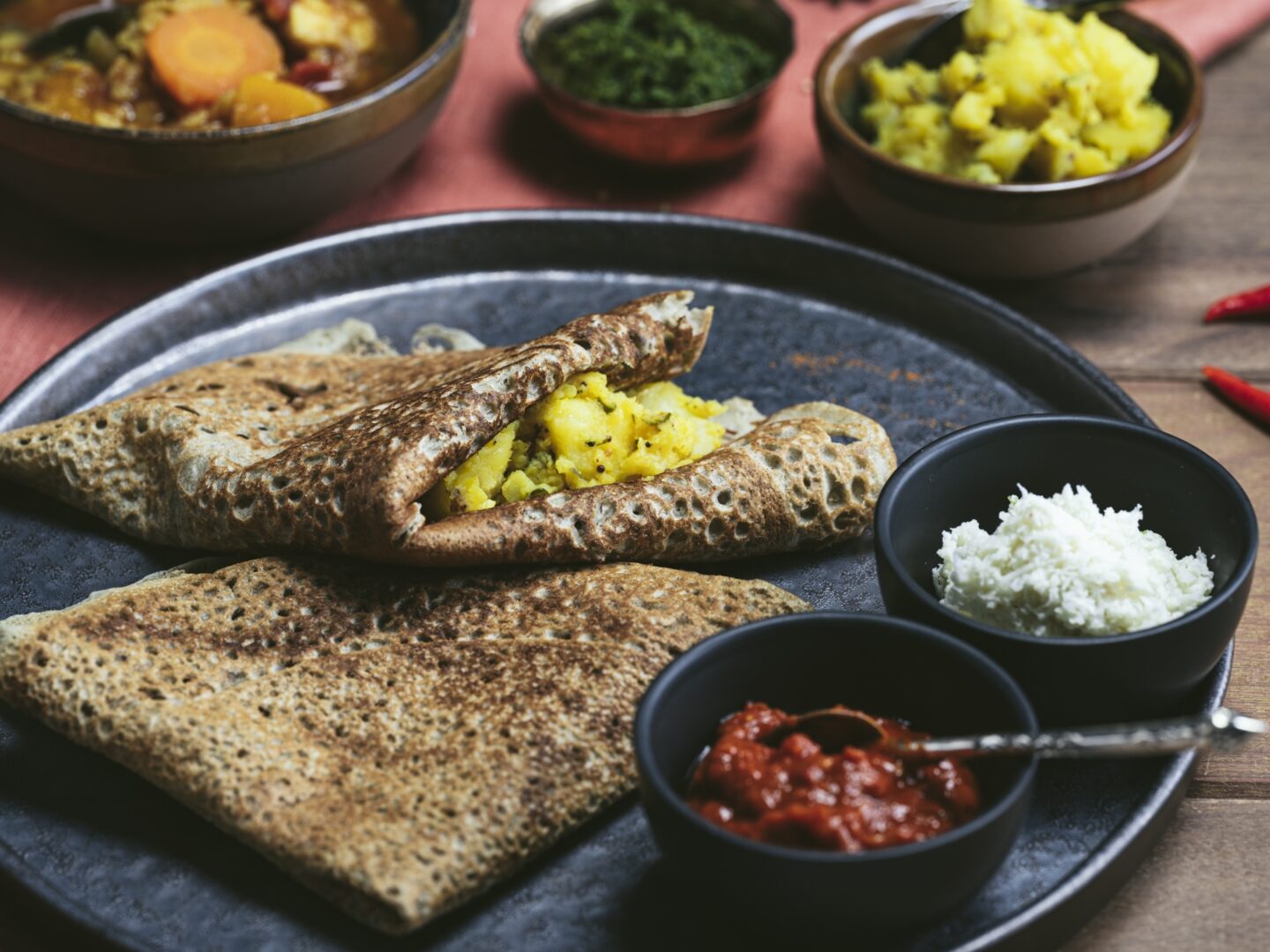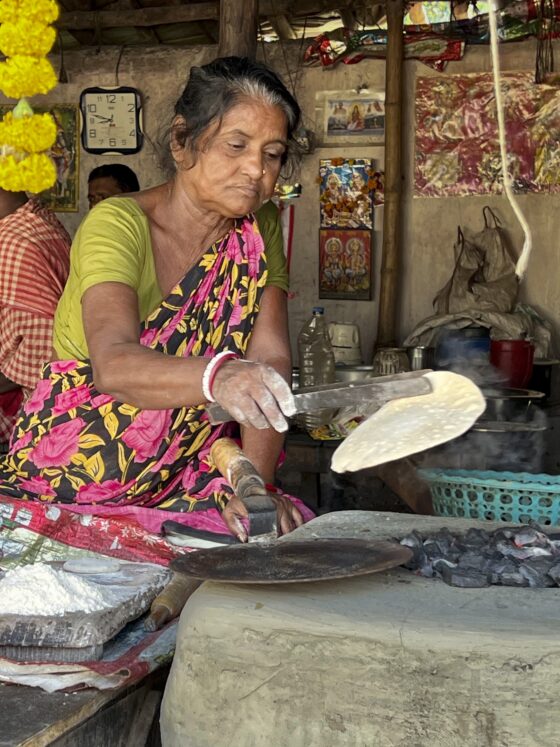Dosa: a breakfast favorite in India
As you could already read in my travel blog about India: Indians love bread and they eat it with every dish. For breakfast, they prefer dosa, a kind of pancake eaten with various chutneys and sambar. If you also serve spicy potatoes with it, then you have masala dosa. Delicious!
There is a lot involved in preparing masala dosa. I'm happy to explain it all to you!

What is dosa?
Dosa is best described as a kind of crispy pancake. The base for the dough is rice and lentils. You soak them in water, then grind them into a batter and let it ferment. Then you bake the pancakes from the batter. You get the best results with a cast iron or a non-stick pan.
Main ingredients of dosa: rice and lentils
For dosa, you need the right kind of rice and lentils.
It's best to use parboiled rice. If you don't have that around, you can also use basmati rice.
In addition, you need urid dal. These lentils, also known as black gram split, are black on the outside and white on the inside. They have a mild, earthy flavor and are a common ingredient in Indian cuisine. Urid dal is also very healthy and is high in protein and calcium. With these lentils, dosa is an ideal dish to start the day!

Making dosa batter - does it take long?
Because of the soaking and fermentation, it takes a long time to make dosa, although you don't have to do anything yourself during that time. With a little patience, you'll enjoy a delicious treat.
With these ingredients, you will make about 12 dosa's:
- You will need a blender and a cast iron pan
- 400g basmati rice
- 120g urid dal
- ½ teaspoon fenugreek seed
- 2 tablespoons rice flakes
- 175 - 350 ml cold water plus water for soaking
- 1 teaspoon salt
- 100 ml ghee or oil
-
Step 1:
First rinse the rice and lentils until the water runs clear. Then pour them into a large bowl and add the fenugreek seeds. Add enough water into the bowl so that everything is submerged and has room to swell. Soak the rice and lentils for 5 to 6 hours.
Half an hour before the soaking time is up, add the rice flakes to the water.
Drain everything in a fine sieve.
-
Step 2:
Put the soaked rice, lentils, fenugreek and rice flakes in a blender. You need to add in a little water to start the blender. Add more cold water until you have a smooth batter, but don't make it too thin. Next, add the salt.
Cover the dough and let it ferment in a warm place for at least 12 hours. This can take up to 48 hours. Your dough is ready when it has risen well and you see lots of little bubbles. If the dough seems too thick, add some water. It should look like pancake dough.
-
Step 3:
Heat the pan and grease it with ghee or oil. Pour a ladleful of dough into the center of the pan. Now spread the dough to the outside of the pan by making circular motions with the rounded side of the spoon. Try to make a thin dosa.
Let the dough dry thoroughly and pour a little ghee or oil along the edges and in the center of the dosa. This will give you a more crispy dosa that will come off the pan easily.
Is your dosa thin and golden? Then it's done. You don't even have to turn it over. Just roll it up and serve with chutney and sambar!
![SG 57 dosa]()
-
A few more tips for a good fermentation
The salt and fenugreek seeds trigger fermentation. Be sure not to use iodized salt.
The dough must ferment in a warm environment. So during the summer months you will have more success. In winter, you can help your dough a little and put it in an oven at 60-70°C. After half an hour, take the bowl out and put it next to the heater for further fermentation.
-
Can you make dosa without fermentation?
Is your fermentation unsuccessful or is your climate not warm enough? You can always make dosa without fermentation. With the following recipe, you can quickly enjoy a delicious meal.
Ingredients
- 200 g chickpea flour
- 300 g rice flour
- 8 g dry yeast
- 600 ml water
- 1 tablespoon salt
Preparation
First activate the dry yeast. To do this, mix it with 50 ml of lukewarm water. Let it rest until you see a small layer of foam on the surface.
Meanwhile, mix the chickpea flour with the rice flour. Now add the yeast and some of the water. Mix and add more water. When you have a thick, smooth batter then cover the bowl with a cloth. Let the dough rise until it doubles in volume.
Finally, add the salt. Add more water if the dough is too thick. The result should resemble a pancake batter.
Your dough is ready and you can now bake dosa as in step 3 of the original recipe.
-
Can you substitute dosa?
Is making your own dosa not your thing? Then feel free to buy a pack of prepared buckwheat pancakes. The result is not the same, but they are an acceptable alternative.
